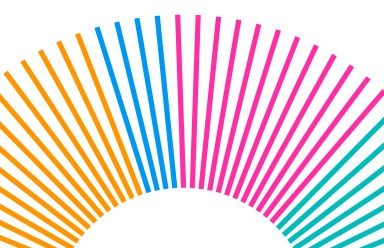ShareThis, the company behind the all-in-one web widget that allows people to share content with others through an array of digital channels, recently interviewed Randall Beard, Nielsen’s Global Head of Advertiser Solutions, about the ins and outs of today’s advertising landscape. The conversation covered multi-screen usage, big data, programmatic and fully understanding consumer behavior in a crowded marketplace.
ShareThis: What advice do you have for brands when developing ad strategies in the current multi-screen landscape?
Beard: I spent nearly 25 years of my career on the advertiser side of the business, and for the majority of that time advertising and media were relatively straightforward, simple. Today, creating an effective advertising strategy is unbelievably complicated due to an incredibly fragmented industry, especially with the rise of new forms of media like social, mobile, tablet, etc.
Last year Nielsen partnered with the Association of National Advertisers (ANA) to learn more about the challenges that advertisers are facing in an integrated multi-screen world. There were several really interested things we heard back from clients:
- It is important to measure not only how well your advertising reaches your intended audience, but also how much it resonates, changes brand preference and reaction. In other words, does it affect behavioral sales? We call this the three Rs: reach, resonance and reaction.
- Clients want common metrics in measurement across platforms. Although every platform is unique, in order to have comparability to allocate spending appropriately across platforms, you have to have common measurement metrics. At Nielsen, we have approached this for measuring reach, resonance and reaction in very standard ways across TV, online, digital, etc. We encourage our clients to simplify success metrics in this complicated fragmented media landscape with three basic questions:
1. How well are you reaching your intended audience?
2. How well does your advertising resonate with that audience?
3. How well does it drive a reaction?
We want to measure reaction in a common way across all paid media platforms but also for owned and earned media as much as possible.
ShareThis: Nielsen has a saying “better, not bigger, data.” How are you implementing this on a day-to-day basis?
Beard: For years many digital measurements like page views and click-through rates existed, but at the end of the day advertisers and agencies were left with one major question: who did my digital advertising reach? For a long time, we tried to build panels to solve this problem and place real measurements around this issue, but due to the extremely fragmented nature of digital, this was incredibly hard to do.
The ability to measure audience delivery in digital with traditional panels was virtually impossible, so we said to ourselves, who has the largest panel in the world? This thought process led us to our current partnership with Facebook. In the U.S. alone, Facebook has over 180 million users. Facebook registration data provides an excellent, census-level understanding of audience demographics.
It is also really important to remember that as good as digital registration data is, it’s not perfect. So in order to make the data even better, we take it and compare it to our cross platform gold standard panel. Then we put it through a calibration engine to make sure it is really accurate.
ShareThis: How do Nielsen solutions help brands reach consumers and understand consumer behavior in today’s crowded marketplace?
Beard: The reason digital audience measurement is so important is because advertisers, agencies and media companies want accountability. When an advertiser buys 30 million impressions against women 20-29, they want some measurement to know whether or not the media company or publisher actually delivered. If they didn’t, then advertisers and agencies can ask for a guarantee that they will make good to deliver that amount of impressions that they were promised
Another approach is through real-time optimization — moving money from lower performing to higher performing sites. In terms of reaching consumers and understanding consumer behavior, that circles back around to the reach, resonance, and reaction model, and using reaction to be smarter about who you want to reach. Being able to optimize real-time allows users to maximize performance of a campaign while it’s still going on, and before ad dollars are wasted.
One of the things that we have developed is the ability to do what I call single source — bringing together a measurement of what people watch, including the ads that they are exposed to, and what they buy at the household level. We have a panel of consumers where we know what they’ve been exposed to and what those people have purchased in store, based on other datasets. We then match those two at a household level, stripping out any personally identifiable information. This data is anonymized and privacy-protected. From there we follow a simple process that can improve ad effectiveness by approximately 35%:
- The first step looking at those who are exposed and those not exposed to determine if there is a sales lift.
- Then, identify the people that were exposed to the advertising and rank how volumetrically responsive they were.
- Next, pinpoint the highest volumetrically responsive group.
- We then look at our Watch panel and ask what TV shows they watch, what websites do they go to, and how do those differ from the media plan that we ran?
- Once we’ve run the metrics, we evaluate that information, and optimize the media plan based on our findings with the same budget. On average you see about a 35% increase in sales response.
ShareThis: With the rise of programmatic, is there an impending advertising singularity?
Beard: First off, what is singularity?
Singularity is when computers and artificial intelligence become smart enough to self-learn and become smarter than humans.
There is so much going on in the world of advertising and media and it is creating greater automation and optimization opportunities for advertising effectiveness. Increasingly you’re able to measure individual level exposure to ads and then match that to consumption of purchase behavior. These measuring tools are becoming faster, and are continuously updating. By looking at what people are exposed to and they’re buying, brands can measure the individual impact of every digital touch point. For example, an advertiser that’s bidding for 10,000 search keywords could measure the individual impact of each of those 10,000 search keywords, and not just for the sales impact online but also for offline sales.
These advertisers can also measure the impact of all combinations of touch points. For example, if you look at an individual that has viewed a display ad, online video ad, searched for your brand and liked your Facebook page then compare them to an individual who has seen a display ad and an online banner ad twice, what’s the difference between those two? We are measuring the impact of these individual touch points in real-time. Many platforms have machine learning capabilities where they continuously learn about what methods are more effective. They have the ability to plug into demand-side platforms and drive real-time bidding. This is individual-level measurement of advertising exposure that is connected to purchase behavior and all updated in real-time. All of this can be done in an automated way.
So, is that an advertising singularity? I don’t think so. I think there will always be room for individual decision making and there are many parts of the media ecosystem that aren’t set up to do what I just described. I think we will start to see more of that in the future as well as automation in optimizing advertising and media campaigns.
ShareThis: What makes an excellent partnership and how do you foster that with your digital partners?
Beard: Working in this business you have to work really hard to stay on top of industry trends — every day there is something new that you didn’t know about the day before. At Nielsen there are two ways we approach this, one is organizational and one is cultural.
From an organizational approach, in the world of ad effectiveness we realize that beyond our basic product development capabilities we needed some kind of organizational capability to address cutting edge issues that are client facing. We decided to create an advertising effectiveness innovation lab in partnership with Stanford University. The basic concept of the lab includes talking to clients, understanding their biggest pain points and work collaboratively with these clients, and also startups and third parties to solve those problems. We’ve taken on some big challenges in the innovation lab. It’s been a great incubator for not only working with clients on new issues, but has also fueled some of our upstream product development.
A few years ago, Nielsen became very focused on a simple, open and integrated culture. In this world where you have changes in technology and media every day, being open to solving client problems through partnerships is crucial. There are many examples within Nielsen where we have developed a proprietary internal solution to solve a problem, but there are many examples where we have partnered with other companies to solve problems as well. One example is Nielsen Catalina Solutions. Earlier, I described the use of single-source data where we measure what people watch and what people buy, and bring those elements together at the household level. Nielsen contributes viewing data from our panels and analytics expertise, and Catalina brings loyalty card data. We combined the two to create something that solves a big client need. Fostering a culture that is open to experimentation and external partnerships to solve big important client problems is really important.
ShareThis: What developing trends do you think will affect the way marketing organizations operate?
Beard: Today’s media fragmentation, the changes in technology, rise of social, and more, have created a huge transformation in the industry. We are finding that this is forcing our clients to rethink the skillsets required to be successful in the future – whether you’re a CMO, brand assistant or media planner. There are three areas I want to point out that I think are really important:
- Data. Marketing in general is much more data and evidenced base, and it is becoming much more of a science. To be clear, creative, big advertising and marketing ideas will always be the foundation for great marketing. However, the rise of data and evidence-based marketing is a big trend, and getting the finance function to begin seeing marketing as an investment, as opposed to a cost line in the income statement, is essential.
- Real-time. Everything is moving to real-time. Programmatic and automated buying drives some of that, but the two require tremendous human intervention. There’s a growing need for people that have the ability to be adaptive and operate in the moment.
- Technology. Going back to my early career, we didn’t really have to pay that much attention to technology, but today, it is one of the most important elements in advertising. Marketers have to much more engaged with what’s happening from a technology standpoint because new capabilities are enabling expanded opportunities in marketing that were not possible before.
ShareThis: What trend or development from the last five years has surprised you most?
Beard: The main challenge that advertisers and agencies are trying to figure out is how to advertise in a truly cross-platform world. Backing up a little bit, when I was working at American Express in the early 2000s, we launched the Amex gift card. I can still remember that when we were launching, we had a $30 million ad budget, and we were going to spend about half of it in eight weeks, because half of all the gift cards each year are sold in November and December. We launched the product in October and had about six weeks to get 80-90% awareness.
The agency gave us the initial TV media and digital plans, and when we asked, “What’s the total unduplicated reach, frequency and GRPs?,” they had no answer for us. Today many of our clients are struggling with the same basic questions. We’ve been very focused on bringing new tools to advertisers and agencies that allow them to plan across platforms so they can maximize reach across TV and digital. This is a topic that I would have thought the industry would have grasp on at this point. I do think most of the basic capabilities are now in place for advertisers and agencies to be much smarter about how they advertise across platforms in an integrated way.
ShareThis: What is the last thing you shared? Online or offline?
Beard: Today, I shared on LinkedIn and Twitter a new book that just came out called “Cutting Edge Marketing Analytics,” written by several professors, one of which is Professor Paul Farris who was my advertising professor at UVA, and I actually wrote the foreword, so I wanted to share with my network.
This article was originally posted on the ShareThis blog.



